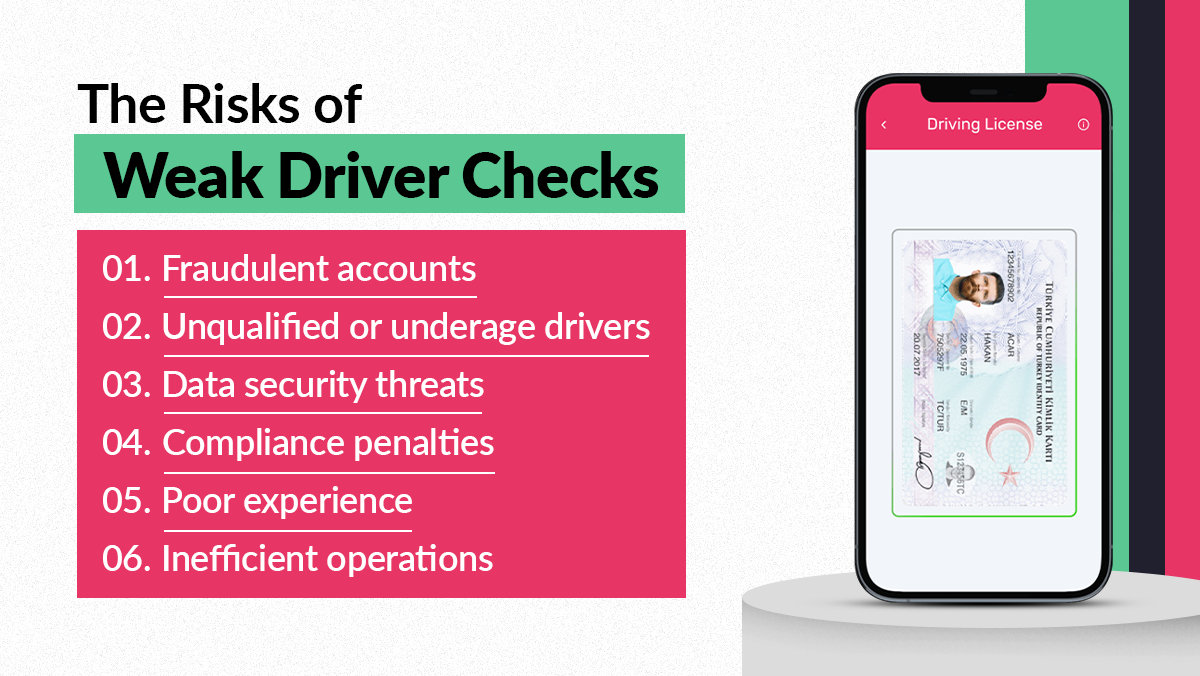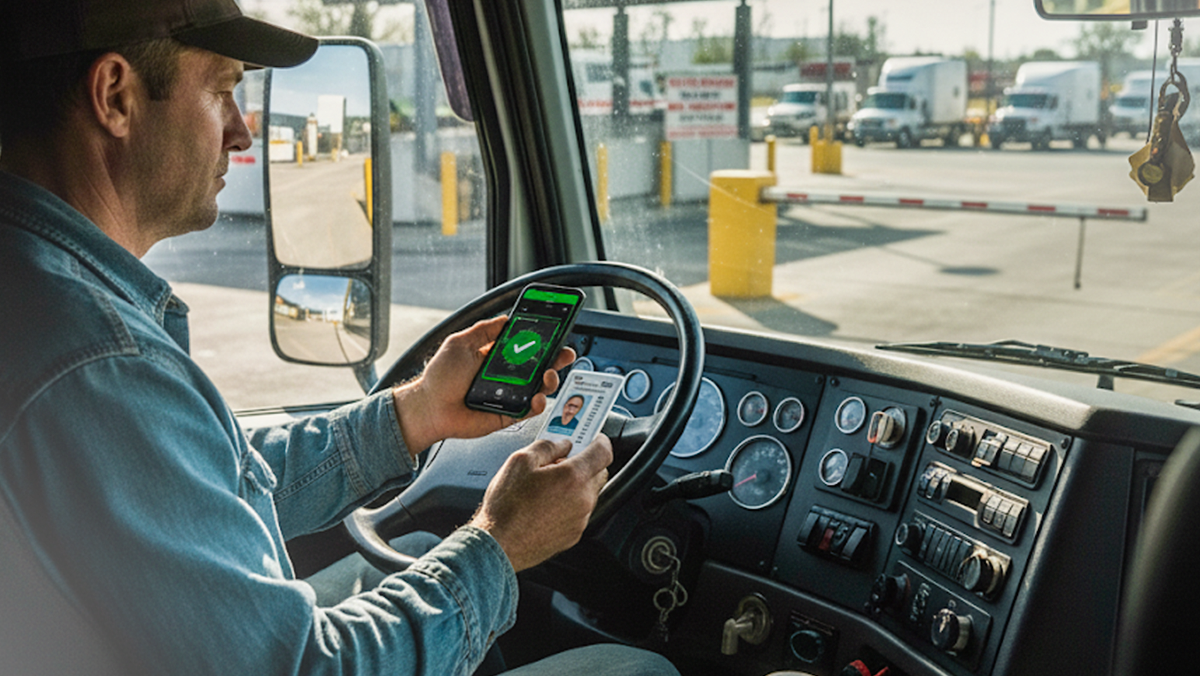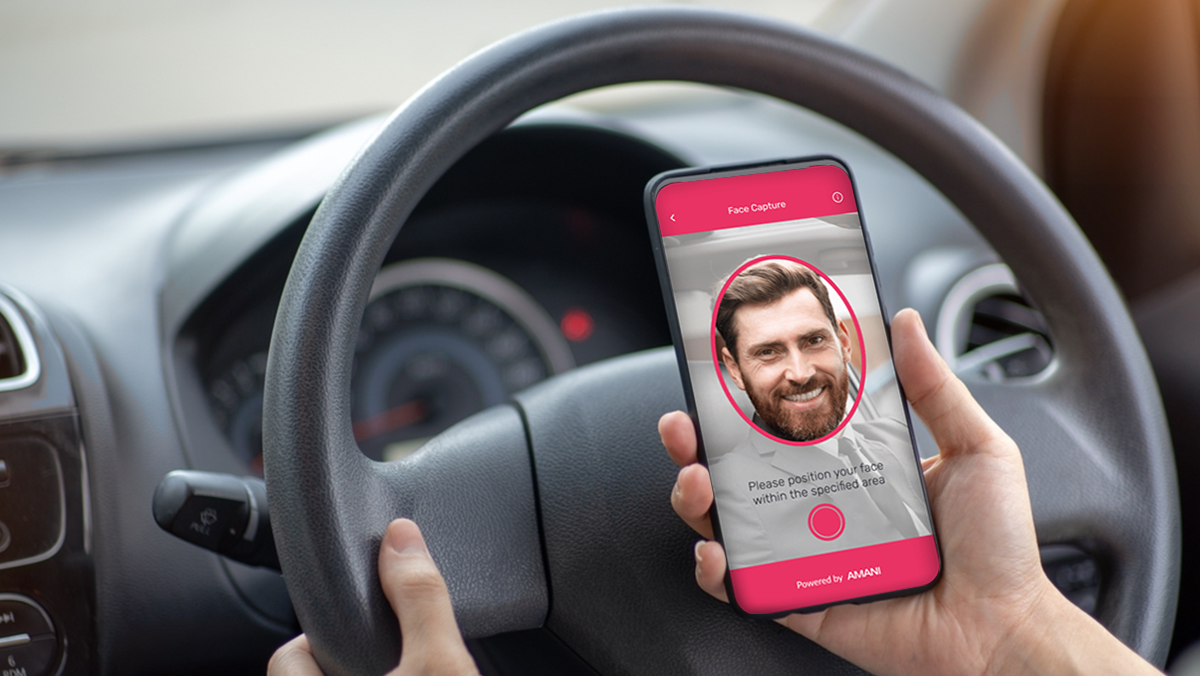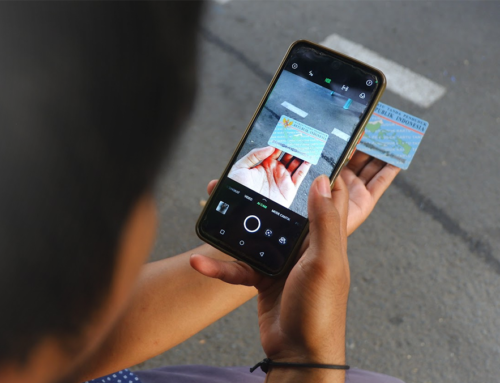Fraudulent driver accounts are a persistent challenge for ride-hailing, delivery, and rental platforms. According to the Incognia 2025 Gig Economy Edition Frontline Report, common issues such as fake accounts, location spoofing, and account sharing are widespread across the industry, posing risks to customer safety, platform trust, and regulatory compliance. In this blog, we explore the real dangers of overlooking the need for AI-powered driver identity verification in Dubai and globally, recent regulatory updates, and how Amani helps mobility platforms maintain both compliance and user confidence.
Regulation Spotlight: The New Rules Shaping Driver Verification
Around the world, governments are tightening rules to ensure driver identity is verified and recorded correctly. Mobility platforms can no longer rely on surface-level checks.

FMCSA’s New ID Verification for USDOT Applicants (USA)
The U.S. Federal Motor Carrier Safety Administration (FMCSA) has rolled out a requirement that anyone applying for a USDOT Number via the Unified Registration System must now provide identity verification. This includes scanning a QR code, photographing both sides of a government ID, and taking a selfie to match with the ID photo.
New Jersey Adopts Digital Driver’s Licenses (mDLs) with Privacy Protections
New Jersey passed a law mandating the creation of digital driver’s licenses and non-driver ID cards. Users will be able to carry their driver’s credentials on smartphones. The law also includes strong privacy protections.
Redesigned Driver Licenses in Texas with Enhanced Security Features
Texas has unveiled a new design for its driver license and ID cards (as of August 18, 2025). Changes include more tamper-resistant materials (polycarbonate), new visible markers for REAL ID compliance (such as a laser-engraved star instead of the older gold star), and reorganized personal information layout to make verification easier.
Why this matters to mobility platforms
Driver identity verification is more than just a regulatory checkbox. It directly impacts safety, trust, and growth. Without strong checks, platforms risk penalties, reputation damage, and customer loss. AI-powered driver identity verification software offers a secure verification process that builds confidence for both drivers and passengers.
- Non-compliance leads to heavy fines and licence suspensions.
- Passengers demand trust and transparency when they book.
- Fake drivers damage brand reputation and ratings.
- Legal liability rises if an unverified driver is involved in an incident.
Driver licence verification has moved from a box-ticking exercise to essential infrastructure for every mobility business.
The Risks of Weak Driver Checks
If verification is slow, manual, or inconsistent, mobility platforms face serious risks:
Fraudulent accounts
Without proper checks, fake drivers can easily create profiles, putting customers at risk and exposing platforms to reputational damage. Once fraudsters slip in, it becomes difficult to regain passenger trust.
Unqualified or underage drivers:
If minors or previously banned drivers are allowed to operate, platforms face severe legal consequences. This can lead to lawsuits, penalties, and suspension of licences from regulators.
Data security threats:
Weak ID handling practices increase the chances of sensitive driver data being leaked or stolen. A single breach can cost millions in fines and erode customer and driver confidence.
Compliance penalties:
Regulators in the EU, US, and Asia are issuing higher fines for KYC failures. Non-compliance doesn’t just hurt financially; it also damages a platform’s licence to operate in key markets.
Poor experience:
Slow or manual identity verification frustrates drivers, leading to drop-offs during onboarding. Platforms risk losing qualified drivers to competitors who offer smoother verification.
Inefficient operations:
Manual reviews consume time and resources, keeping teams tied up with paperwork. This slows down scaling efforts and reduces the ability to quickly expand into new cities or regions.

How Platforms Can Stay Ahead with AI-Powered Verification
Amani’s AI-powered driver identity verification solution lies in combining compliance with a seamless driver experience. Platforms require fast and reliable tools that verify identities while maintaining trust.
Amani offers a sophisticated, AI-driven workflow:
Driver Onboarding
- Drivers capture their licence using their phone.
- AI auto-detects, reads, and validates licence details in seconds.
Selfie and Biometric Check
- Drivers take a selfie.
- Amani’s face-matching engine compares it with the licence photo for instant authentication.
Driver Accepting a Job
- Before starting a trip, drivers re-authenticate with a quick selfie.
- BioLogin confirms the driver’s identity in real time.
Our solution ensures compliance with KYC, age verification, and data protection requirements while maintaining a fast and user-friendly onboarding process.
Case Study- A Car-hailing Company in Turkey Enhanced Driver Safety and Prevented Account Sharing with Amani
One of the largest car-hailing companies in Turkey, sought to reduce risks during driver onboarding and prevent account sharing. Amani addressed this in two phases: first, by implementing its Identity Verification Engine to enable secure and efficient onboarding, and second, by deploying its Biometrics Engine to verify drivers’ faces against registered profiles before accepting rides, eliminating account sharing. As a result, driver onboarding now completes in under 60 seconds with a success rate exceeding 95% and no manual intervention. The solution ensures every driver completes onboarding with their documents, strengthens passenger safety, and protects the company from fraud, making the process both reliable and seamless for drivers and the company alike.

Five Actions Mobility Platforms Should Take
- Review the regulations in your operating markets and identify compliance gaps
Stay updated with local and international transport, KYC, and data protection laws. Compare these requirements with your current practices to spot where your verification process may fall short.
- Audit your current verification process to highlight risks in licence or age checks
Map out how drivers are onboarded today. Look for weak points such as manual reviews, inconsistent record-keeping, or missing age verification that could expose you to penalties or fraud.
- Deploy AI-driven licence and biometric verification to stop fraud early
Automated tools can instantly validate licence authenticity and compare selfies with IDs. This reduces reliance on manual checks, blocks fake drivers, and keeps onboarding fast and reliable.
- Integrate verification with your CRM or CMS for complete visibility
Centralising verification data allows teams to monitor driver status in real time. It also helps compliance officers generate reports quickly, making audits and regulatory submissions easier.
- Enable re-authentication at key points to stop account sharing
Add biometric face checks when drivers accept jobs or log in. This ensures only the verified driver uses the account, preventing impersonation and protecting passenger safety.
In Conclusion
Driver licence verification is now a core requirement for mobility platforms. It underpins safety, compliance, and long-term trust. By automating verification with AI and biometrics, businesses can onboard drivers quickly, protect passengers, and meet global regulatory standards.
Ready to see how Amani can help your platform achieve secure, compliant growth? Book a demo today and explore how driver licence verification can become your competitive advantage.
Frequently Asked Questions
- What problems do mobility platforms face without driver’s licence verification?
Platforms risk onboarding fake or unqualified drivers, facing compliance fines, and losing passenger trust. Weak verification can also expose businesses to legal issues and reputational damage. - How does Amani’s driver verification strengthen compliance?
Amani uses AI and biometrics to validate licences in real time. This ensures platforms meet global KYC and transport regulations while reducing the risk of fraud and penalties. - Will automated licence checks slow down driver onboarding?
No. Amani’s verification process is designed for speed and accuracy. Drivers can be verified in seconds, which helps platforms onboard more drivers efficiently without sacrificing security. - How does biometric re-authentication improve safety?
With selfie-based face matching, platforms can prevent account sharing or impersonation. This ensures the driver accepting a ride or delivery is the same person verified during onboarding. - How can mobility businesses get started with Amani’s verification service?
Integration is simple. Amani’s API connects seamlessly with existing platforms, allowing businesses to start verifying licences and identities instantly while scaling globally.



